History of vidya gamez part III
Hello
again, get your socks on because it's time for history of vidya gamez
part III.
In the
last part we covered the 80s through to the end of the fifth
generation at the end of the 90s; the major points during that period
being the large push for graphical supremacy and the introduction of
handhelds, with the games industry very quickly working it's way into
mainstream culture.
In this
part we examine the consoles of the previous two generations leading
into modern day and current gen consoles like the Wii U, PS4 and the
XBOX ONE. While looking at the major advances during these eras like
the rise of online play, social media and the dominance of the mobile
market.
We also
have a brief look into the future of gaming and I share my thoughts
on where we might be heading next. Anyway, time to jump in...
Sixth
Generation consoles
The sixth gen started in 1998 with a console by Sega
called the Dreamcast. It was noted as being ahead of it's time; the
Dreamcast was the first console to feature online console gaming
because of it's built in modem and also the first console to render
full frames instead of interlacing.
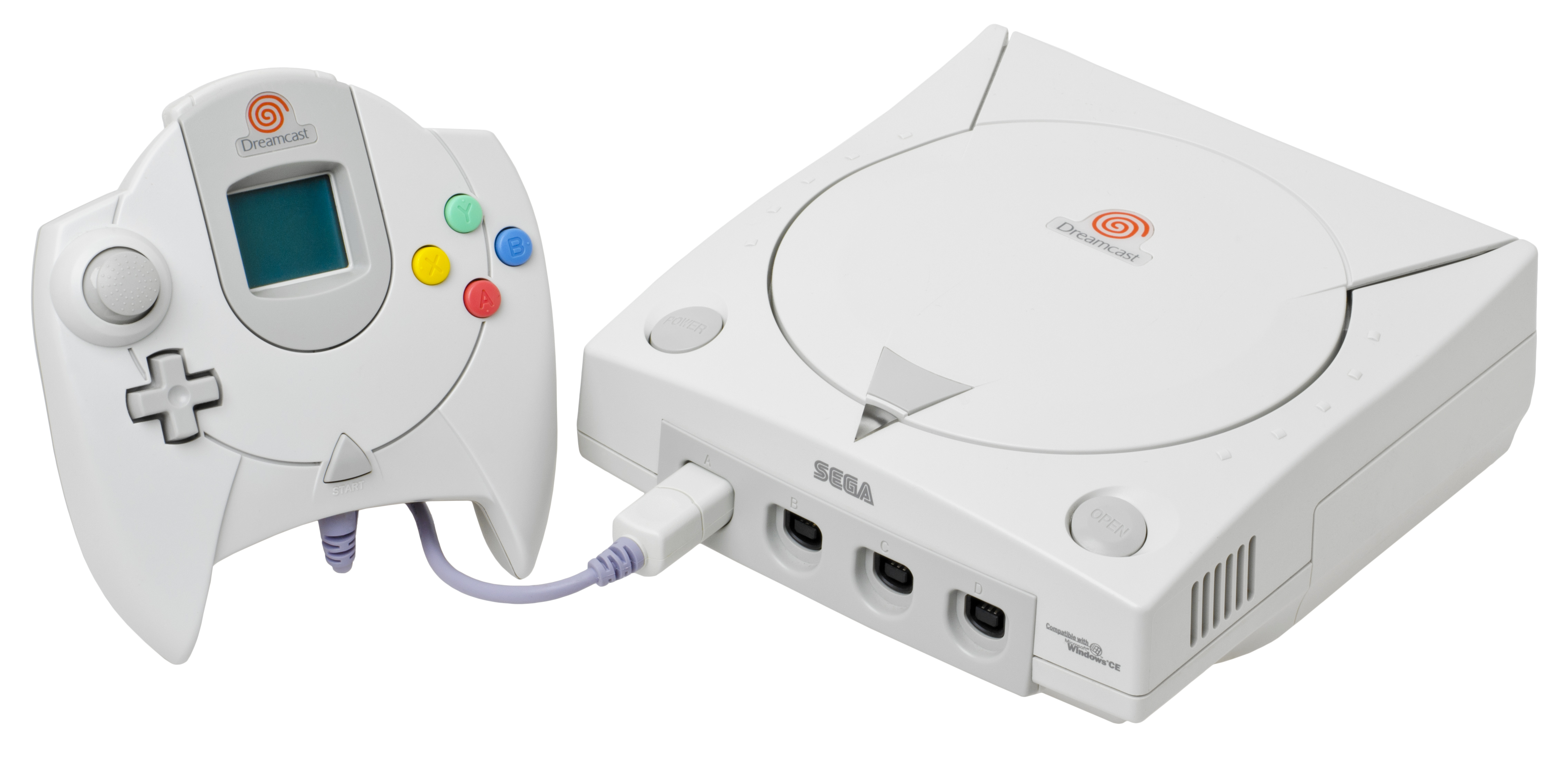 |
| Sega Dreamcast - Image source: http://en.wikipedia.org/wiki/Dreamcast |
It was initially doing well as it had a strong launch
line up and good sales however upon the announcment of the
Playstation 2 the sales quickly dropped, the common consunsus being
the Playstation's brand power and addition of DVD player in the PS2
lead to the downfall of the Dreamcast. This had huge ramifications
for Sega as the company realised it no longer had the resources to
continue producing consoles and the company restructured itself into
third party publisher.
The Dreamcast was hugely influencial though despite it's
short lifespan. Sega assisted Microsoft in the design of the original
XBOX and it's online services where the design influence can be
noticed. It also to this day has a strong cult following with several
successful Kickstarter campaigns bringing new indie games to the
console like Sturmwind and Redux: Dark Matters.
Next we
have the big one: the highly anticipated Playstation 2. Building from
the success of the Playstation brand in the previous gen, the 'PS2'
became an instant success on it's release in 2000. It went on to
become the best-selling console of all time selling over 155 million
units.
 |
| The playstation 2 - Image source: http://upload.wikimedia.org/wikipedia/commons/1/1c/PS2-Versions.jpg |
The major
appeal of the PS2 was the addition of a full built-in DVD player
which meant that the console could perform as an all-round
entertainment system, another point was the backwards compatibility
with PS1 games which earned the PS2 a huge library of games at launch
and a larger install base compared to the competition.
Another
contender during this generation came later on from Microsoft with a
console called the XBOX; it's strong points were slightly improved
graphics over the PS2 and an integrated online platform known as XBOX
Live which set the standard for online platforms to follow. It did
not manage to steal too much dominance from Sony but it did sell
reasonably well with games like Halo: Combat Evolved being a critical
and commercial success selling over 5 million copies.
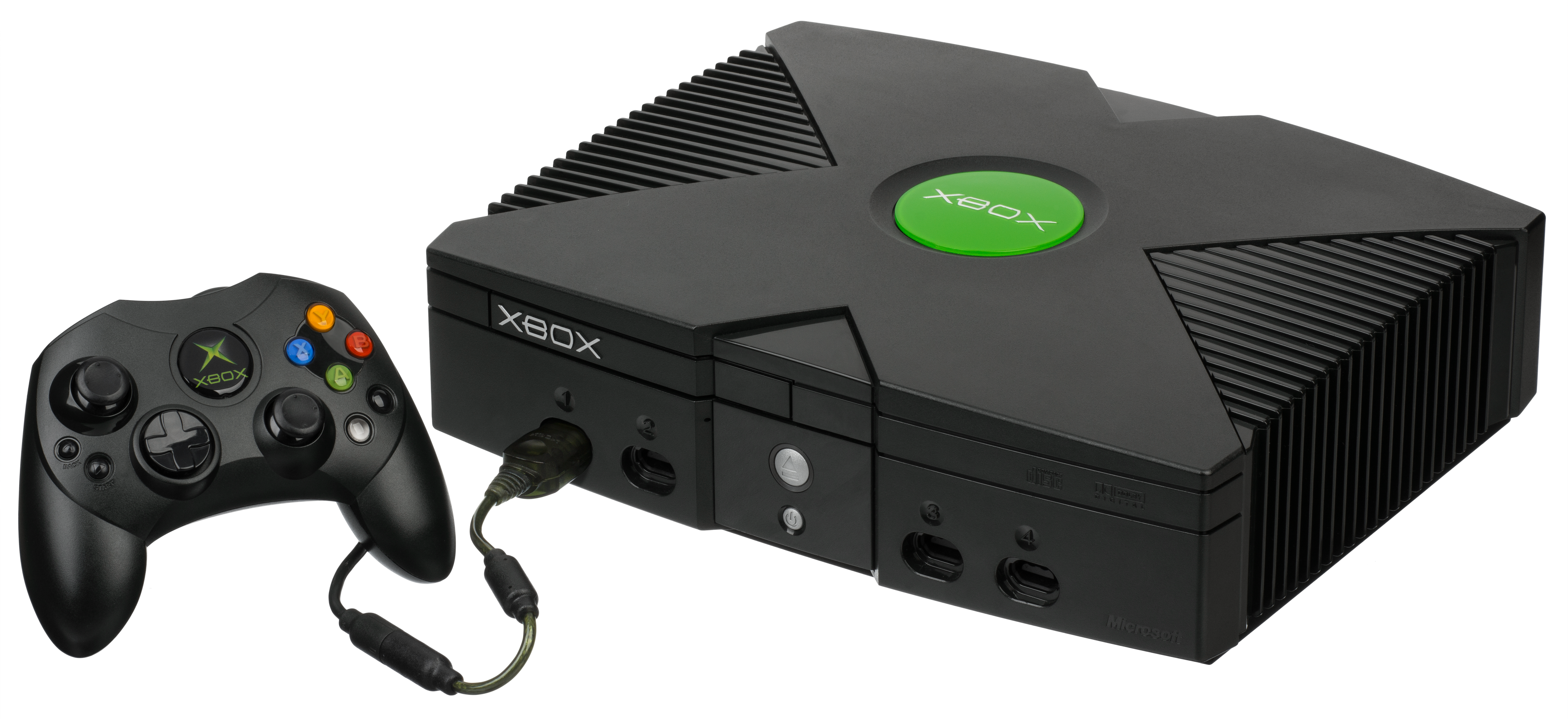 |
| XBOX - Image Source: http://upload.wikimedia.org/wikipedia/commons/c/c2/Xbox-Console-Set.png |
Sixth
generation advances
During the sixth gen major advances came in terms of
online games. The inclusion of the built in modem on the Dreamcast
was the first sign that internet play could be the the future of
gaming although it didn't start to pick up until Microsoft brought
it's dedicated servers to the XBOX a few years later.
 |
| World Of Warcraft - Image source: http://dynamicsubspace.files.wordpress.com/2011/02/screen-shot-2011-02-11-at-2-16-11-pm.png |
It was also around the early noughties that MMOs started
to appear on the PC, offering interaction between large numbers of
players from across the planet. In 2004 the largest MMO to exist
launched 'World Of Warcraft' and is still thriving to this day.
Online games served as the basis for online communities like forums
and chatrooms, the social gaming aspect being something which has
continued to build in future generations, more on that later
though...
Seventh
Generation
We are closing in on the present day, just another
generation to go. This generation started with the introduction of
the handhelds; firstly then here is the Nintendo DS.
 |
| Nintendo DS - Image source: http://images.eurogamer.net/2013/usgamer/Yamauchi-3.jpg |
The Nintendo DS was Nintendo's successor to the Game Boy
line of handhelds and it introduced a number of unique features: It
had a dual screen with one being touch-enabled allowing for new
gameplay possibilities, it also added a wireless internet connection
and a feature called download play which allowed the devices to
download a demo of a game temporarily onto their DS for wireless
multiplayer.
The DS was successful in attracting new people to game
consoles, with games like Brain Training and Big Brain Academy
attracting middle-aged consumers into buying one, it also followed in
the footsteps of it's predecessors by appealing towards children more
than it's competitors.
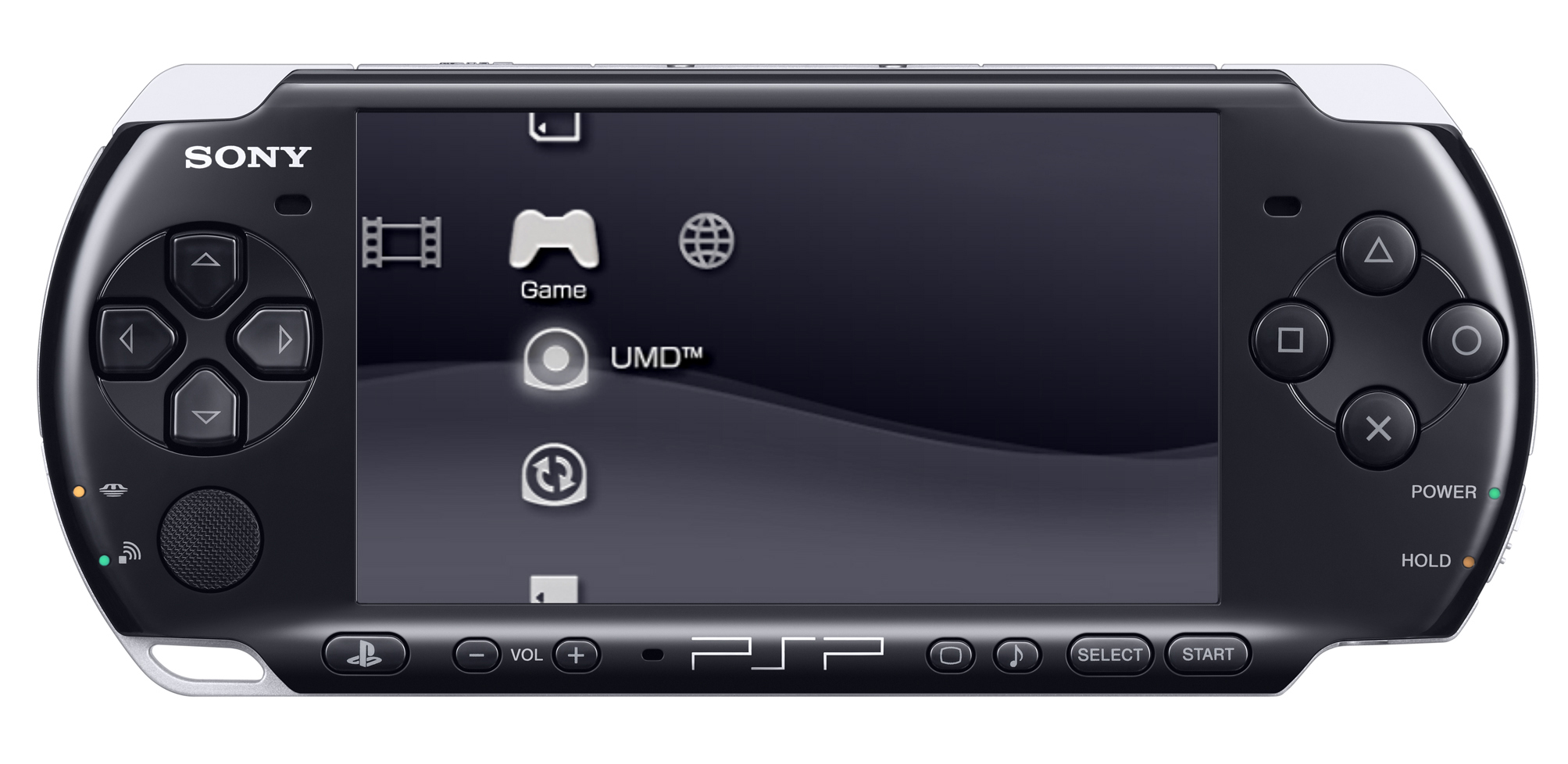 |
| PSP - Image source: http://www.returnmarket.com/media/termekek/1366835680_psp_3000_console_black_brand_new_goods.jpg |
The competition to the DS was Sony's entry into the
handheld market: The Playstation Portable (PSP.) It featured a large
LCD screen, powerful graphics for a handheld and had more options for
media playback including the support of proprietary discs called UMDs
on which films and games were distributed for the system.
Now onto the home consoles of the seventh gen. Microsoft
unveiled it's successor to the XBOX in 2005 called the XBOX 360, with
HD graphics capabilities and an upgraded version of it's XBOX Live
service which included the ability to buy downloadable content and
games from XBOX marketplace.
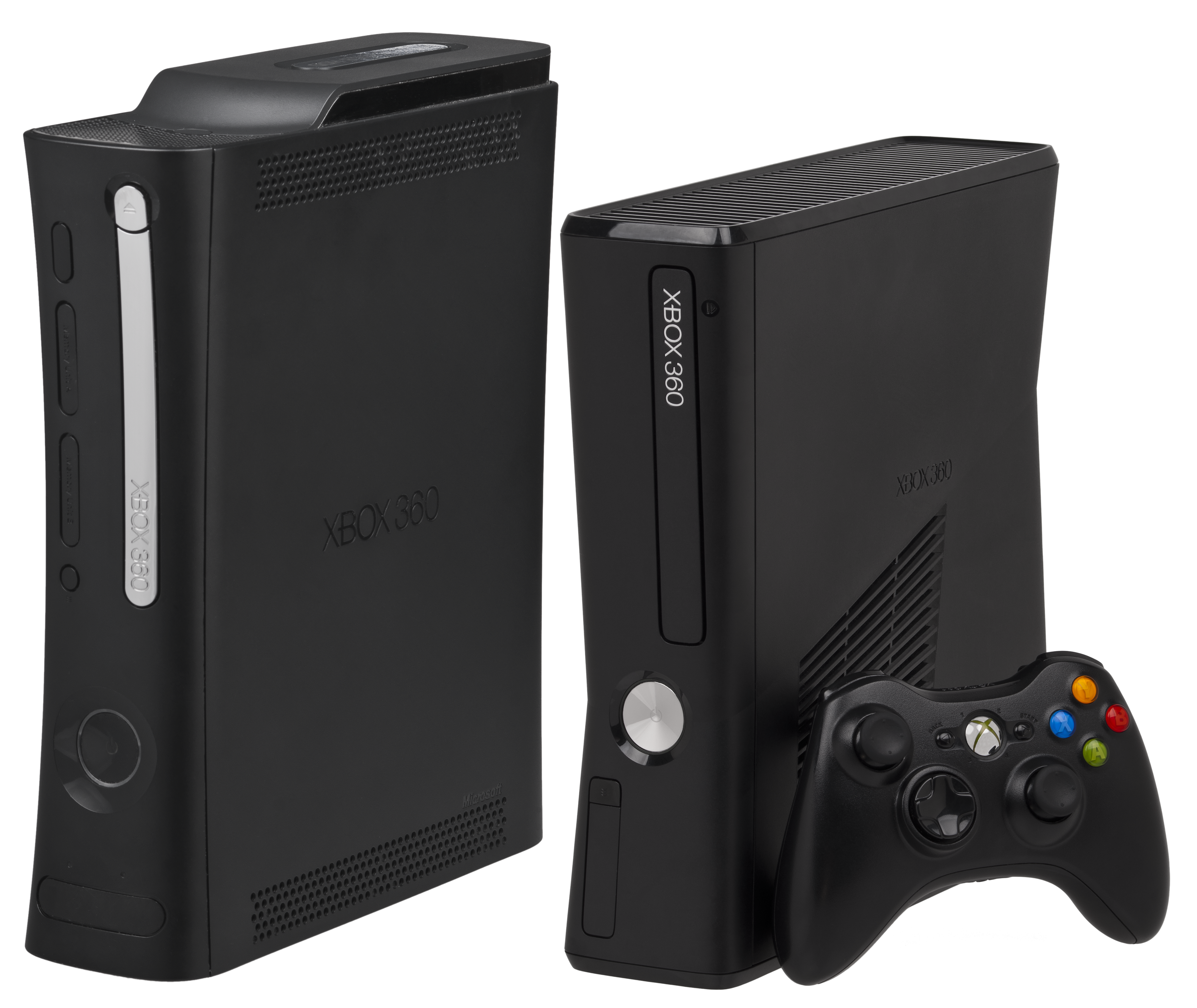 |
| XBOX 360 - Image source: http://upload.wikimedia.org/wikipedia/commons/0/03/Xbox-360-Consoles-Infobox.png |
Sony's offering was the Playstation 3, also with HD
graphics and an dedicated online service. The consoles were very
similar in many ways in terms of graphics and online functions but
each one had their own unique selling points.
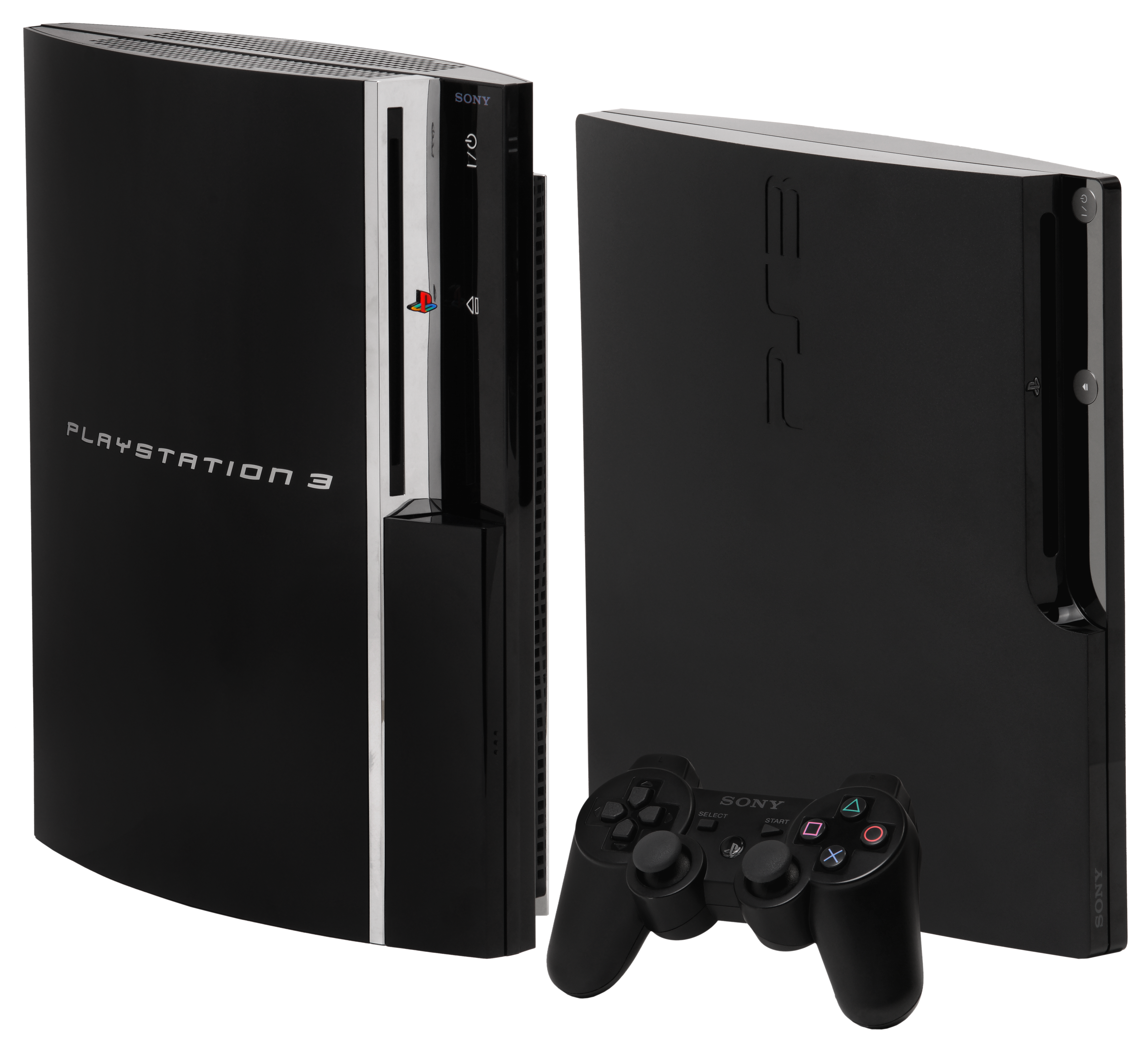 |
| Playstation 3 - Image source: http://upload.wikimedia.org/wikipedia/commons/d/d3/PS3Versions.png |
The PS3 included support for Bluray discs on which games
and video were distributed, a major selling point. For games, the
extra memory Blurays had on disc compared to regular CDs allowed for
larger games. However the PS3 had it's problems at first including a
really steep price at launch and the system's architecture which used
the specially made Cell Processor made it difficult to develop on.
This and some other issues resulted in Sony losing some of it's brand
power during this generation that it wouldn't regain until later on
after successive iterations of the PS3 and more releases.
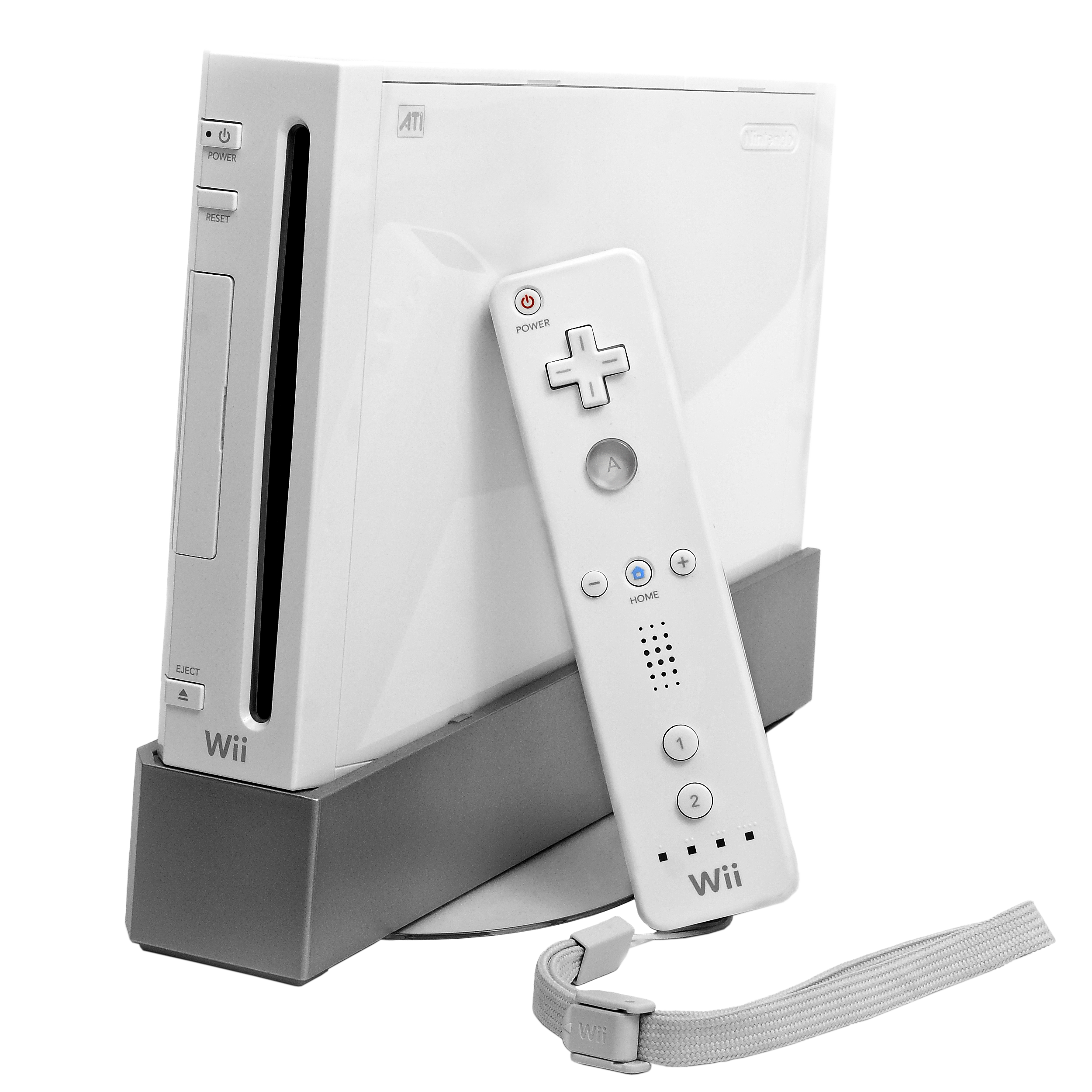 |
| Nintendo Wii - Image source: http://upload.wikimedia.org/wikipedia/commons/f/f3/Wii-Console.png |
Nintendo's console was a rapid departure from the other
two consoles as it made more of a focus towards innovative gameplay
rather than graphical improvements. The 'Wii' was first console with
motion controls, which it used to gain a mass appeal with apps like
Wii Sports attracting people who never really play games. The Wii
became a runaway success for Nintendo as their biggest selling
console and paved the way for motion controls and casual appeal in
video games.
Motion controls would go on to become a major point this
generation after the success of the Wii. Sony would go on to create
it's own motion controllers (The Playstation Move) while Microsoft
worked on the Kinect which is a camera which can detect the movement
of a whole body.
Another shift this generation came in the form of mobile
gaming, with mobile devices becoming more advanced allowing for more
gaming possibilities. These kinds of games became very popular with
the casual market with the likes of Angry Birds and Fruit Ninja
selling millions of copies.
This shift in the industry has had ramifications all
over. Combined with the rising costs of AAA development, smaller
developers now have more of an opportunity to gain money from their
projects. Also with different price models these companies now have
much much more freedom over their control of their revenue, leading
to a huge surge in indie development in recent years which continues
in the next gen with more freedom provided by the console makers.
Modern
day – Eighth generation
Now we have finally reached the modern era of video
games and the new generation of consoles. This gen has seen a focus
on cloud gaming, social connectivity and live streaming and new
features on the consoles reflect that.
 |
| 3DS - Image source: http://upload.wikimedia.org/wikipedia/commons/f/f0/Nintendo-3DS-AquaOpen.jpg |
The new handhelds this generation have more of a focus
on social media. With more integration with popular sites like
Facebook and Twitter, and a focus on more gamer centric connectivity
like the Streetpass feature on Nintendo's new 3DS which allows two
3ds consoles that come in close proximity to share gifts and
characters.
| PSVita - Image source: http://upload.wikimedia.org/wikipedia/commons/3/3f/PlayStation_Vita_illustration.svg |
More technological and graphical leaps have also been
made this gen, the handhelds being no exception. The 3DS sports a 3d
screen that doesn't require glasses to wear and the PSVita (Sony's
successor to the PSP) sports a large OLED screen with HD graphics.
 |
| Wii U - Image source: http://upload.wikimedia.org/wikipedia/commons/4/4a/Wii_U_Console_and_Gamepad.png |
In terms
of home consoles, the Wii U is the first of this gen. It builds upon
using a different control method like the Wii set in motion with a
new controller called the gamepad which features a small LCD
touchscreen to display extra information for the game. The pad also
has new gameplay possiblilites like assymetric gameplay, this means
people using different controllers can get a different experience on
the same game and affect it in different ways.
Next the
two graphical powerhouses in the PS4 and the XBOX ONE. Both consoles
are more
PC like in build compared to their predecessors and have a lot more
RAM allowing for more content to be shown on screen at one time.
 |
| XBOX ONE - Image source: http://upload.wikimedia.org/wikipedia/commons/4/42/Xbox_One_Console_Set.jpg |
The newest
consoles focus heavily on connectivity aswell though and features
more integration with social networking sites like Facebook, also
both consoles feature an the ability to share gameplay clips or
stream gameplay over Twitch.
The next
step being pushed with these consoles is game streaming which allows
people to stream games over an internet connection almost like a
video game version of Netflix. It started over the last couple of
years on PC platforms but with the PS4 using Gaikai cloud technology
it will be possible to have the whole playstation back catalog
available to stream with no latency, which is a huge achievement.
Alos this
generation had seen the rise of alternative consoles catering to
smaller audiences. Among these are the Ouya Microconsole which is
based from an android OS and is fully moddable right out of the box.
Another alternative console due to be released soon is the Steam
Machine by Valve which functions as a gaming PC that can be used in
the living room, it also comes with a unique controller that offers
mouse like precision for PC games.
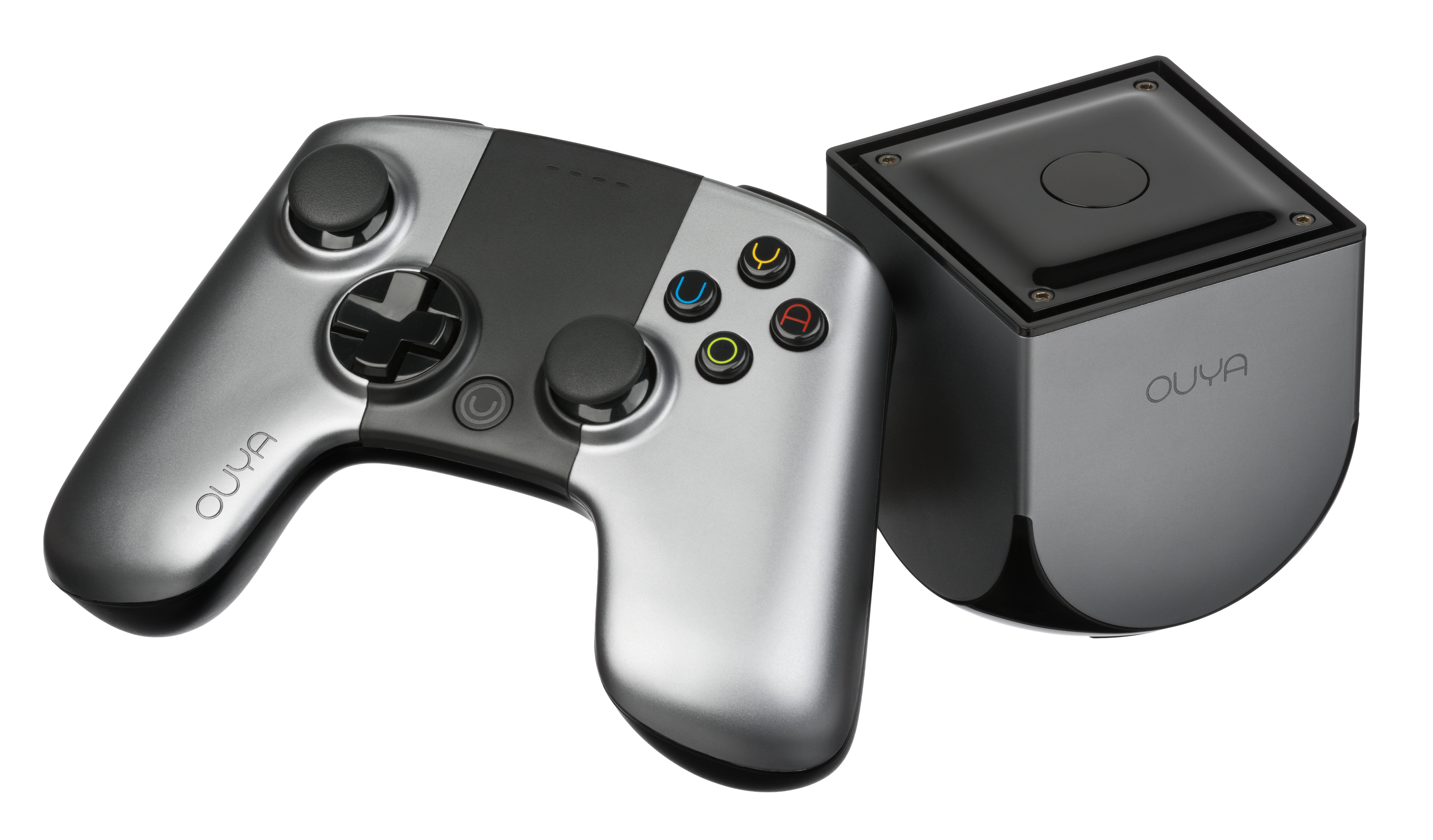 |
| Ouya Microconsole - Image source: http://upload.wikimedia.org/wikipedia/commons/a/af/OUYA-Console-set-h.jpg |
Future
of Gaming and conclusion
As we are just entering a new gen of gaming a lot of
people are asking what the possibilities are going forward; a current
talking point is the rise of virtual reality gaming as a result of
the successful Kickstarter campaign of the Oculus Rift.
Virtual reality is the technology that allows the game
to completely envelop the player in the virtual world by surrounding
their vision and offering intuitive controls, up until now it has
been the focus of science fiction and numerous failed attempts but
now technology is at the point where it could be feasible.
 |
| Oculus Rift - Image source: http://blogs-images.forbes.com/antonyleather/files/2014/04/OculusRift.jpg |
Once
current problem that engineers are trying to overcome though is the
problem of motion sickness while using the helmet device, this is
caused by the different in speed between the images in the helmet and
real life and also the latency in movement as the player turns their
head.. One solution being experimented with is a helmet that can beam
images straight into the retinas for super clarity and no latency,
for a perfect experience this would have to be combined with a
precise sensors picking up the direction and tilt of the head.
My opinion
on virtual reality is that it will become a core gaming experience
down the line but it will take further advancements in order to make
it commercially viable. This may be sooner than later though as Sony
(With their Project Morpheus Virtual Reality for the PS4) and
Microsoft are making their moves in this area while hopefully pushing
what is possible with the VR technology.
This extra
competition could really speed up the process of getting a fully
functional VR device on the market, especially with the first parties
dedicating large teams and finances to VR development.
It would
be interesting to see what what kind of games and experiences arise
from virtual reality. The purchase of Oculus by Facebook seems to
show that VR could have uses beyond just games; new kinds of social
interaction, virtual reality webcams and multiplayer hangouts are
just some of the areas that VR could go into.
Maybe
eventually -in combination with graphical and performance
improvements- that players can enter large scale, fully interactive
virtual worlds. Although a future where everybody is sitting on their
sofas with a helmet on while losing touch with reality is a bit of a
scary one...
I guess it
won't be as scary as slender on VR though.
Hope you
enjoyed reading my history of video games, hopefully the future of
games will get more and more interesting as time goes on.
Bibligraphy
Duranik. [Online]. [Accessed 13 April 2014]. Available from: http://sturmwind.duranik.com/
Playstation. [Online]. [Accessed 13 April 2014]. Available from: http://uk.playstation.com/ps2/
Gamerankings. [Online]. [Accessed 13 April 2014]. Available from: http://www.gamerankings.com/xbox/472132-halo-combat-evolved/index.html
Gamespot. [Online]. [Accessed 13 April 2014]. Available from: http://www.gamespot.com/world-of-warcraft/
Blizzard. [Online]. [Accessed 13 April 2014]. Available from: http://us.blizzard.com/en-us/games/wow/
Nintendo. [Online]. [Accessed 13 April 2014]. Available from: https://www.nintendo.com/ds
Playstation. [Online]. [Accessed 13 April 2014]. Available from: http://uk.playstation.com/psp/
Crawley, D. (2013). VentureBeat. [Online]. [Accessed 13 April 2014]. Available from: http://venturebeat.com/2013/05/17/consoles-that-wont-die-the-sega-dreamcast/
Stickney, A. WoW Insider. [Online]. [Accessed 13 April 2014]. Available from: http://wow.joystiq.com/2014/01/03/what-is-world-of-warcraft/


Comments
Post a Comment
Leave a comment, I'll try and get back to you soon as possible. ^.^